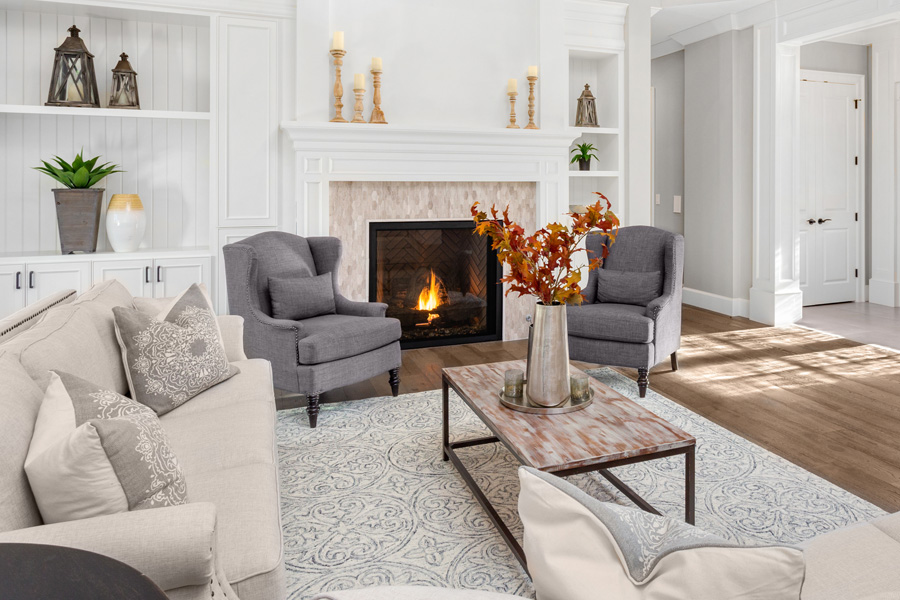Whether you have just installed new hardwood or are looking to spruce up your existing wood floors, adding an area rug can be a great way to refresh the space. Artistic flooring additions, like rugs and runners can complement the beauty of hardwood flooring by highlighting colors, patterns, and textures in your floors. In addition to adding character and color into your room, rugs assist with dampening sound and offer an additional layer of protection to your flooring investment. But with all the colors, sizes, and material options at hand, how do you know you are picking the best one? Check out our how to choose an area rug tips below for the perfect way to add the finishing touch of a perfect rug to your home.
Step 1: Assess the Space
First, it is important to look at all aspects of your space. Which room will the rug live in, what type of light hits the floor there? Is this a high-traffic area or one that is rarely used? What is the vibe of the space? Is it a living room, where plush textures and high pile can add to cozy feel? Or is this an office, where chairs, desk and furniture need room to move and roll? Different spaces of the home require alternative solutions and one rug won’t work for every area. By being mindful of your choices, you can ensure your rugs – and hardwood floors – stay looking great for years to come.
Step 2: Decide on Size and Shape
Now that you know the physical limitations of your room and the baseline needs, start looking the size and scale of your needs. Larger rugs can make a space feel bigger, extending the sightlines of the room and acting as a landing pad to unite different pieces of furniture. Smaller rugs and section out different zones, like reading, lounging or a vignette area. Consider how layering or overlapping rugs might make the space feel. Would it streamline or break up the overall scheme?
Step 3: Choose the Material
Modern area rugs can be made of a multitude of different materials. From full synthetic, to wool, silk, and hybrid models. Because of this wide variety, it’s important to check the care and maintenance required to keep them looking fresh. Also remember to choose fabrics that will not run or bleed when wet. We like wool for its breathability and durability. It is a natural fiber that offers a high resilience to wear and tear along with a soft feel and cushion underfoot.
Also, pay attention to the material of the back of the rug. Backings such as latex and plastic can trap moisture which then can then warp your hardwood and ruin the finish. There are also instances when rubber backed rugs can leave marks on the floor from discoloration due to the UV light from the sun. Woven backings are the most ideal for air flow. If you decide on a latex or rubber backed rug and are worried, place a felt rug pad underneath to reduce the risk of damage.
Step 4: Pick Your Palette
Get ready to stretch your creativity. To highlight your floors, pick a contrasting color for your area rug that showcases the tone and feel of your space. For example, in a room with dark floor and dark furniture you can lose the contrast between where the furniture ends and the floors begin. For this, choose a rug with color or texture that pops. Dark hardwood looks great paired with colors like beige, white, gray, pastels, or lighter rugs with jewel tone accents. If you have light hardwood, go with colors such as: saturated earth tones, moss green, wine, and browns to make your flooring pop. Bring along a sample of your hardwood floors when shopping for your area rugs to get an accurate feel and visual of your space. Or better yet, shop for both at the same time at Next Day Floors.
How To Choose An Area Rug
Area rugs are a great way to add character, provide protection, and transform your hardwood floors. Once you’ve chosen your area rug, make sure to properly prepare your floor with a simple mop and vacuum. Adding a rug pad can prolong the life of your investment and keep it looking great for years to come. With a little planning, your favorite hardwood floor designs will look even better when showcased next to a complementary area rug.






